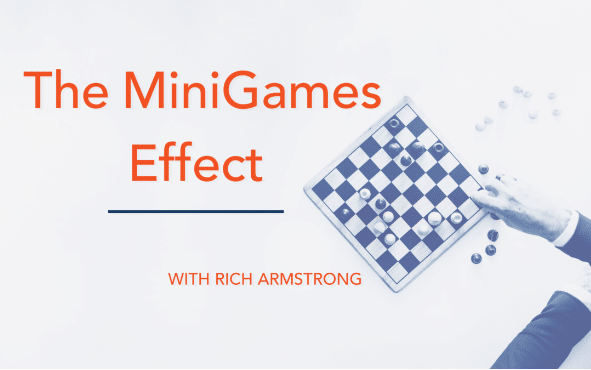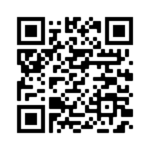
The Great Game of BusinessIt’s been over 26 years since Jack Stack published the revolutionary guide, “The Great Game of Business: The Only Sensible Way to Run a Company.” Revolving around the concept of “open-book management,” The Great Game of Business (GGOB) introduced companies to the profitability of financial transparency with their employees.
As Rich Armstrong, President of The Great Game of Business, Inc. explains, “The foundational philosophy behind GGOB is that for people to participate and engage in the business they need to know what the business is all about, how the business makes money and how they can participate in making the business more successful.
We organize the whole practice around the idea that understanding business doesn’t need to be any more complicated than a game of monopoly, provided that you understand the rules, have a way to follow the action and have a stake in the outcome.”
By encouraging companies to share business and financial information with their employees, and engaging employees in the learning process, GGOB aims to create a “business of business people.” To establish a sustainable system where everyone is working together to achieve the business’ goals, large and small, for maximum profit and success.
An Introduction to MiniGames
As part of providing that tangible “win” for employees, GGOB works with a component called MiniGames. Armstrong explains, “The reason we call themMiniGames is they’re really about the small wins that lead up to the big win.
In short, MiniGames are a microcosm of the Big Game. They are developed toto correct a weakness or pursue an opportunity within the business. It helps teams to get focused on a common goal, moving in the right direction, while also reinforcing things like business education, building teamwork and creating a culture of winning.”
Armstrong shared an example of a recent successful implementation of a MiniGame. “A Digital Marketing company put a MiniGame around their employees entering timely reports for billable hours. If you look at that, it’s not something that is going to immediately impact profitability of the company, but it leads to a behavior that helps them have a better understanding of the cost of the business and opportunities for improvement. It helps them quote better and starts to provide clients a more accurate understanding of what it’s going to take to finish their projects.
They put together a 90 Day game and set it up in 30-Day increments. The first 30 days they had a target to get somewhere in the 30-40% entry range, then they wanted to reach around 70-75% and their final goal was 100%. At each one of those levels they provided a graduated reward.”
The Essential Elements of MiniGames
Armstrong noted a few of the reasons this MiniGame proved successful, what he sees as the essential elements of a MiniGame.
1. GOAL: The goal is clear and valuable. “You don’t necessarily have to tie the MiniGames around the financial outcome or result you’re looking for. You can tie it around the behaviors and activities you want to change.”
2. LENGTH: It lasts anywhere from 60-90 days. “Data has shown that it takes on average about 60-90 days for someone to change their habits and behaviors.”
3. MEASUREMENT: Progress is measured in increments. “Increments give people an opportunity to learn along the way. We really encourage that incremental improvement over time because it takes time to get people to get in the game and start to leverage those results.”
4. REWARDS: Rewards are tangible, scalable and memorable. “We try to tie these rewards around things that are memorable, rather than a quick gift-card or cash. Additionally, raising the level of reward at each stage provides a little more incentive and engagement.”
5. RESULTS: MiniGames should be used, not only as a winning opportunity, but as a learning opportunity. “We’re not only getting a result out of this, but we’re also raising the level of business and financial literacy of our people.”
After the MiniGame
What happens next? Armstrong says, “If you set up a game that creates a change in a habit, behavior or process, you not only achieve rapid results you also create a lasting change. That is what we call the MiniGames effect. There’s a step change between what the performance was at the start of a game and what it is after the game. That performance will continue on because you’ve changed the activities, processes and behaviors that were causing that low performance.”
Not only will performance and profitability be increased by implementing successful MiniGames, but there are often unseen benefits. As Armstrong notes, “What we see is what people don’t always recognize while they’re playing the MiniGames, that they’re building a stronger team. People learn more about their business, how things work and how they contribute to the results of the business. When you can create that line of sight with what people do every day and how it effects the overall performance of the business, that’s when you’ve got something special. MiniGames allows that to happen, it gives businesses a tool to help them make that happen.”
If you’re interested in learning more about MiniGames, and how to create your own, visit www.GreatGame.com/Gravitas to download your free resources!

Rich Armstrong
President, The Great Game of Business
Rich Armstrong is the President of The Great Game of Business, Inc. and a 20+year veteran of SRC Holdings Corporation. He co-authored the update to TheGreat Game of Business 20th Anniversary Edition: ‘Get in the Game – TheInteractive Guide’ with GGOB Vice President, Steve Baker.
Rich has been instrumental in the ongoing design and development of theGGOB methodology because of his practical, “first-hand” experience running businesses at SRC – experience that has enabled him to successfully apply the practices of GGOB in both small and large-scale company implementations around the world.
